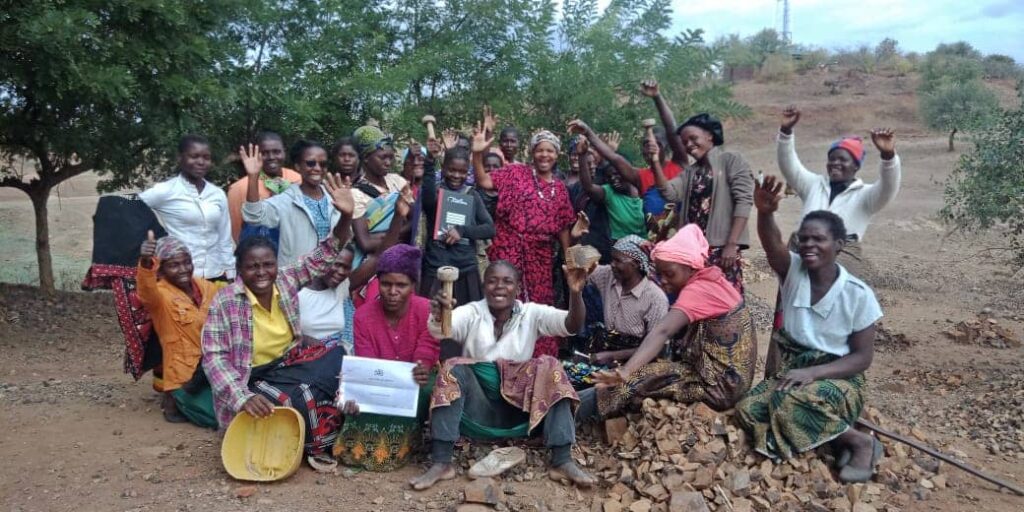
By Lovemore Khomo
Mining activities are on the rise in Malawi as many people are working in both striving artisan, small and large-scale mines across the country.
The recent estimates by the Ministry of Mining, shows that approximately 40,000 people are actively involved in the sector, and most of them being illegal artisan, and small-scale miners.
These artisan and small-scale mining operators are in high proliferation of uniformalised extraction of gemstones, gold and other minerals. The workforce is dominated by men, women and children.
Most of the operators do not take serious considerations on the occupational health and safety practices in the course of their work which has potential to escalate TB cases.
Principal Mining Engineer for Ministry of Mining Regina Kakwela expressed concern that both artisan and small-scale miners are at very high risk of TB, same to others working in big mines because of high levels of silica dust exposure, which can cause lung diseases such as silicosis.
“The mining production stage involves processes such as extraction, milling, and processing, which expose miners or workers to increased hazards. The hazards are common in the production stage than in the exploration stage because of the increased exposure to dust, noise, vibration, heat, radiation, heavy metals, explosives, electricity, and machinery.” elaborated Kakwela.
“Silicosis can greatly increase the risk of TB. Miners may also face other risk factors for TB, such as poor living and working conditions, physical stress, contact with infectious cases, and limited access to health services and social protection.” She added.
Ministry of Mining with support from Southern Africa TB and Health Systems Support Project (SATBHSSP) is addressing the occupational safety and health challenges that miners face.

The SATHSSP aims to support the implementation of various TB, TB/HIV, silicosis and MDR-TB interventions as well as strengthening the health systems to support the implementation of TB interventions among miners, ex-miners and their communities.
In the meantime, Ministry of Mining is implementing some interventions which are formalization of the sector and running sensitization campaigns. On formalization, they organize, assist, facilitate and train all concerned local communities into groups and how to obtain necessary permits that allows them to carry out their work legally.
Kakwela has put on record that there are fourteen certified small-scale miner’s cooperatives, one for rock aggregate in Lilongwe, two for limestone in Blantyre and Karonga while, “Eight of them are mining gold in southern and central regions, one for gypsum in Mponera, a salt mine in Chikwawa, and another which trades gemstones. Only one is unlicensed and five pending licensing and renewal.”

On the other hand, sensitization has been done to small-scale miners and operators on relevant aspects of safety and health including legal frameworks, best practices, risk assessment and management and other occupational accidents and diseases. The department recently reached 12 districts and met at least 600 artisan and small-scale miners.
Kakwela further explained the importance for employers and workers to understand the mining cycle associated with hazards in order to take appropriate measures to protect themselves.
She therefore emphasized that Department of Mines is responsible for the safe and healthy of miners to prevent injuries, illnesses such as TB, and fatalities, and promote safe and healthful workplaces.
Meanwhile, Dr. Yusuf Mtende, Principal Medical Officer at Kamuzu Central Hospital-KCH shared that annual incident of TB among key populations is many times higher compared to the national average of 132 per 100,000.

He gave an example of figures for January to June 2023 where 22 out of 2,404 people screened in the mines were found with TB while 11 out of 1,843 Health Care Workers-HCW got registered with TB, representing an average rate of 915 and 596 per 100, 000 respectively.
In 2022, 2,149 miners were screened as 13 got diagnosed with TB, while 15 out of 2,939 Health Care Workers-HCW got diagnosed with TB representing an average rate of 600 and 510 per 100,000 respectively.
“Within the first year of implementing integrated basic occupational health services, central hospitals have set an admirable example of commitment and leadership to integrate such services into routine care.” elaborated Dr. Mtende.
Mtende explained that integrated basic occupational health services included improved access to occupational health and safety (OHS) in the regions and offering a good model for other hospital based OHS across the country to emulate from.
Meanwhile, KCH Principal Medical Officer said the assessment of Health Care Workers is in progress, while miners be looked into from the month of September, 2023.

